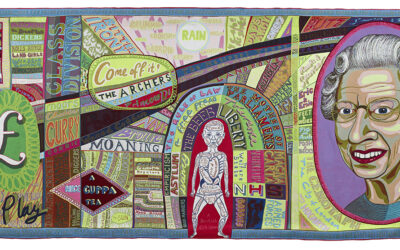Vilém Flusser: Philosopher of Simulacra

I. Who was Vilém Flusser
Vilém Flusser (1920-1991) was a Czech-born philosopher, writer, and media theorist who made significant contributions to the understanding of communication, media, and technology in the late 20th century. Flusser’s work, which spans across multiple languages and disciplines, offers a unique perspective on the ways in which media shape human consciousness and culture. His ideas about the impact of photography, digital media, and technical images on society continue to influence contemporary debates in media studies, philosophy, and cultural theory.
This paper explores the life and ideas of Vilém Flusser, situating his thought within the historical and intellectual context of the 20th century and examining its enduring relevance for understanding the relationship between media, technology, and human experience. By engaging with Flusser’s key concepts, such as the technical image, the apparatus, and the universe of technical images, and by considering their implications for fields such as psychology, anthropology, and religious studies, this paper seeks to illuminate the significance of Flusser’s work for navigating the challenges and possibilities of the digital age.
II. Biography of Vilém Flusser
Vilém Flusser was born in Prague, Czechoslovakia in 1920 to a family of Jewish intellectuals. In 1939, following the Nazi occupation of Czechoslovakia, Flusser and his wife Edith fled to London, where they stayed for a short period before emigrating to Brazil in 1940. In Brazil, Flusser worked in various industries, including as a radio and electronics technician, while also pursuing his intellectual interests.
In the 1960s, Flusser began to establish himself as a philosopher and media theorist, publishing his first book, “Language and Reality,” in 1963. Throughout the 1970s and 1980s, he produced a prolific body of work, including books, essays, and lectures, that explored the relationship between language, media, and technology. Flusser’s work was deeply influenced by his experience of displacement and exile, as well as his engagement with cybernetics, information theory, and semiotics.
In 1972, Flusser took a position as a professor of communication philosophy at the University of São Paulo, where he taught until 1975. He then moved to France, where he lived and worked for the remainder of his life, holding visiting professorships at various universities in Europe and the United States. Flusser died in a car accident near Prague in 1991, at the age of 71.
III. Overview of Key Ideas
At the core of Flusser’s philosophy is a concern with the ways in which media and technology shape human consciousness and culture. For Flusser, the history of humanity can be understood as a series of shifts between different media epochs, each characterized by a particular relationship between humans and their tools. In the age of digital media and technical images, Flusser argues, we are witnessing a profound transformation in the structure of human experience and communication.
One of Flusser’s key concepts is the idea of the “technical image.” Unlike traditional images, such as paintings or drawings, which are created by human hands, technical images are produced by apparatuses, such as cameras or computers. These images, Flusser argues, are not simply representations of reality, but rather projections of concepts and models that shape our understanding of the world. In this sense, technical images have a powerful influence on human perception and cognition, structuring the way we think and communicate.
Closely related to the idea of the technical image is Flusser’s concept of the “apparatus.” For Flusser, an apparatus is not simply a technical device, but rather a complex system of social, economic, and political relations that shape the production and circulation of technical images. The apparatus, Flusser argues, operates according to its own internal logic, which is often opaque to the humans who use it. In this sense, the apparatus has a certain autonomy and agency, shaping human behavior and thought in ways that are not always immediately apparent.
Another central theme in Flusser’s work is the idea of the “universe of technical images.” This refers to the increasingly complex network of technical images that surrounds us in the digital age, from photographs and television screens to computer interfaces and virtual reality environments. For Flusser, this universe of technical images represents a new form of reality, one that is increasingly divorced from the material world and shaped by the logic of the apparatus.
In his later work, Flusser explored the implications of these ideas for the future of human communication and culture. He argued that the rise of digital media and technical images was leading to a fundamental shift in the way we relate to the world and to each other. In the age of the apparatus, Flusser suggested, human beings are becoming increasingly “functionaries” of the technical systems that surround them, adapting their behavior and thought to the demands of the machine.
At the same time, however, Flusser also saw the potential for new forms of creativity and expression in the digital age. He argued that by understanding the logic of the apparatus and the technical image, humans could potentially subvert and reconfigure these systems, using them to create new forms of meaning and communication. In this sense, Flusser’s work is not simply a critique of media and technology, but also an exploration of the possibilities for human freedom and agency in the face of the apparatus.
Key ideas in Flusser’s Philosophy:
Technical Images:
Unlike traditional images, technical images are produced by apparatuses and project concepts that shape our understanding of reality.
Apparatus:
Complex systems of relations that shape the production and circulation of technical images, operating with their own logic.
Universe of Technical Images:
The increasingly complex network of technical images in the digital age that forms a new reality divorced from the material world.
Functionaries:
Human beings adapting their behavior and thought to the demands of technical systems in the age of the apparatus.
Subversion and Creativity:
The potential for humans to reconfigure and subvert the logic of the apparatus to create new forms of meaning and communication.
IV. Implications for Psychology, Anthropology and Religious Studies
Flusser’s ideas have significant implications for a range of disciplines, including psychology, anthropology, and religious studies. His analysis of the ways in which media and technology shape human consciousness and culture offers a powerful framework for understanding the psychological and social impacts of the digital age.
A. Relevance to Psychology
From a psychological perspective, Flusser’s concept of the technical image raises important questions about the relationship between perception, cognition, and media. His suggestion that technical images structure our understanding of reality in powerful ways resonates with research on the cognitive and emotional effects of media exposure. Flusser’s work also anticipates recent debates in psychology about the impact of digital media on attention, memory, and social cognition.
At the same time, Flusser’s concept of the apparatus also has implications for understanding the psychological dimensions of human-technology interaction. His idea that humans are becoming increasingly “functionaries” of technical systems suggests a need for psychological research on the ways in which technology shapes behavior, motivation, and identity. This line of inquiry connects with emerging work in fields such as cyberpsychology and human-computer interaction.
B. Relevance to Anthropology
Flusser’s work also has significant implications for anthropology, particularly in the study of media and visual culture. His concept of the technical image offers a powerful framework for understanding the role of media in shaping cultural practices and beliefs. Flusser’s analysis of the ways in which technical images circulate and structure social relations anticipates recent work in visual anthropology and the anthropology of media.
At the same time, Flusser’s concept of the apparatus also raises important questions about the relationship between technology and culture. His idea that apparatuses operate according to their own internal logic suggests a need for anthropological research on the ways in which technology shapes and is shaped by cultural contexts. This line of inquiry resonates with work in the anthropology of science and technology, as well as with debates about the cultural dimensions of globalization and technological change.
C. Relevance to Religious Studies
Finally, Flusser’s work also has implications for religious studies, particularly in the study of media and religion. His concept of the universe of technical images offers a powerful framework for understanding the ways in which media shape contemporary religious practices and beliefs. Flusser’s analysis of the ways in which technical images create new forms of reality resonates with recent work on digital religion and the mediation of sacred spaces.
At the same time, Flusser’s critique of the apparatus also raises important questions about the relationship between technology and spirituality. His suggestion that humans are becoming increasingly beholden to technical systems challenges traditional notions of religious agency and authority. This line of inquiry connects with debates in religious studies about the impact of secularization and technological change on contemporary religious life.
Philosophical Influences on Flusser’s Thought
Flusser’s philosophy was influenced by a wide range of thinkers and intellectual traditions, reflecting his interdisciplinary approach and his engagement with multiple languages and cultures. Some of the key influences on Flusser’s thought include:
Martin Heidegger:
Flusser was deeply influenced by Heidegger’s critique of technology and his analysis of the ways in which modern technical systems shape human existence. Flusser’s concept of the apparatus, in particular, bears close resemblance to Heidegger’s notion of “enframing” (Gestell) as a mode of revealing that reduces the world to a standing reserve for human exploitation.
Edmund Husserl:
Flusser’s emphasis on the structures of human experience and consciousness also reflects the influence of Husserl’s phenomenology. Like Husserl, Flusser sought to develop a rigorous, scientific approach to the study of human subjectivity, one that could account for the ways in which our experience of the world is shaped by language, media, and technology.
Marshall McLuhan:
Flusser’s analysis of the ways in which media technologies shape human perception and communication owes much to the work of Marshall McLuhan. Like McLuhan, Flusser emphasized the importance of understanding media not simply as tools or channels of communication, but as complex social and cultural environments that structure human experience in profound ways.
Claude Shannon and Warren Weaver:
Flusser’s engagement with information theory and cybernetics was influenced by the work of Claude Shannon and Warren Weaver, whose mathematical theory of communication provided a new framework for understanding the transmission and processing of information in technical systems.
Jean Baudrillard:
Flusser’s concept of the universe of technical images bears close resemblance to Baudrillard’s notion of the “hyperreal,” a state in which the distinction between reality and simulation collapses. Like Baudrillard, Flusser was concerned with the ways in which media technologies create new forms of reality that are increasingly divorced from the material world.
While Flusser drew on a wide range of philosophical and theoretical traditions, he also developed a highly original and idiosyncratic approach to media theory that resists easy categorization. His work combines elements of phenomenology, existentialism, and media studies, as well as insights from cybernetics, information theory, and semiotics. In this sense, Flusser’s thought represents a unique and valuable contribution to contemporary debates about the nature of media, technology, and human experience.
V. Flusser’s Influence and Legacy
Vilém Flusser’s work has had a significant influence on a range of fields, from media studies and philosophy to art and design. His ideas about the technical image and the apparatus have been taken up by scholars and practitioners working across a range of disciplines, and his writings continue to be widely read and discussed today.
In media studies, Flusser’s work has been particularly influential in shaping debates about the relationship between technology, culture, and society. His concept of the technical image has been taken up by scholars working on topics such as digital photography, video games, and social media, and his critique of the apparatus has informed discussions about the politics of media and technology.
In philosophy, Flusser’s work has been influential in shaping discussions about the nature of reality and the relationship between humans and machines. His ideas about the universe of technical images have been taken up by philosophers working on topics such as simulation, virtual reality, and artificial intelligence, and his critique of the apparatus has informed debates about the ethical and epistemological implications of technology.
Flusser’s work has also had a significant impact on art and design, particularly in the fields of new media art and speculative design. His ideas about the technical image and the apparatus have inspired artists and designers working with digital media, robotics, and other emerging technologies, and his writings have been widely read and discussed in art and design circles.
Today, Flusser’s legacy continues to be felt across a range of fields and disciplines. His work remains a vital resource for scholars, artists, and practitioners seeking to understand the complex relationship between media, technology, and human experience in the digital age. As we continue to grapple with the implications of emerging technologies such as artificial intelligence, virtual reality, and the internet of things, Flusser’s ideas offer a powerful framework for navigating the challenges and possibilities of the 21st century.
VI. Timeline of Vilém Flusser’s Life
1920:
Born in Prague, Czechoslovakia.
1939:
Flees Nazi occupation of Czechoslovakia with his wife Edith, moving to London.
1940:
Emigrates to Brazil, where he works in various industries.
1963:
Publishes his first book, “Language and Reality.”
1972:
Becomes a professor of communication philosophy at the University of São Paulo.
1975:
Moves to France, where he holds visiting professorships at various universities.
1983:
Publishes “Towards a Philosophy of Photography,” one of his most influential works.
1985:
Publishes “Into the Universe of Technical Images,” exploring the impact of digital media on society.
1991:
Dies in a car accident near Prague, at the age of 71.
VII. Major Works and Publications
“Language and Reality” (1963) – Flusser’s first book, exploring the relationship between language, thought, and reality.
“Towards a Philosophy of Photography” (1983) – A seminal work in media theory, analyzing the impact of photography on human perception and culture.
“Into the Universe of Technical Images” (1985) – An exploration of the implications of digital media and technical images for human communication and society.
“Vampyroteuthis Infernalis” (1987) – A philosophical fable comparing human and cephalopod intelligence to reflect on the nature of consciousness.
“The Shape of Things: A Philosophy of Design” (1993, published posthumously) – A collection of essays on design, technology, and culture.
“Writings” (2002, published posthumously) – A collection of Flusser’s essays and articles on a wide range of topics, from media theory to art and politics.
VIII. Bibliography
A. Primary Sources
Flusser, Vilém. “Towards a Philosophy of Photography”. Reaktion Books, 2000.
Flusser, Vilém. “Into the Universe of Technical Images”. University of Minnesota Press, 2011.
Flusser, Vilém. “Writings”. University of Minnesota Press, 2002.
Flusser, Vilém. “The Shape of Things: A Philosophy of Design”. Reaktion Books, 1999.
Flusser, Vilém. “Gestures”. University of Minnesota Press, 2014.
Flusser, Vilém. “Post-History”. University of Minnesota Press, 2013.
B. Secondary Sources
Finger, Anke, Reto Guldin, and Gustavo Bernardo. “Vilém Flusser: An Introduction”. University of Minnesota Press, 2011.
Ströhl, Andreas. “Vilém Flusser: Phenomenology of Communication”. Sage, 2019.
Gochenour, Phil. “Nodding Off: The Great Recession and the Horizons of Attention”. Vilém Flusser’s Philosophy of Distraction. Flusserstudies, 2017.
Becker, Claudia and Anke Finger (eds.). “Vilém Flusser and the Arts”. ZKM | Center for Art and Media Karlsruhe, 2020.
Hanke, Michael. “Vilém Flusser’s Philosophy of Language”. Brill, 2019.
Schwendener, Martha. “Vilém Flusser on the History of Photography”. Afterimage, 1988.
Mozzini, Camila. “Vilém Flusser and the Brazilian Identity”. Flusser Studies, 2021.
Digital, Media, and Cultural Theorists and Philosophers
Bernays and The Psychology of Advertising
Claude Shannon and Warren Weaver


























0 Comments